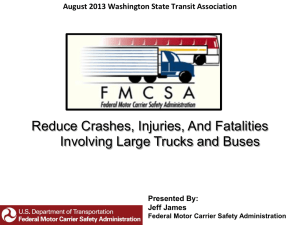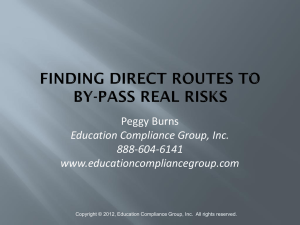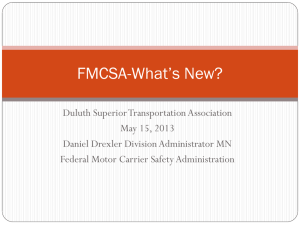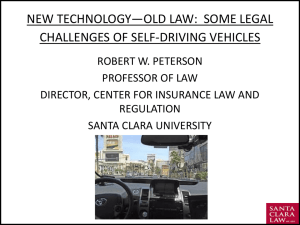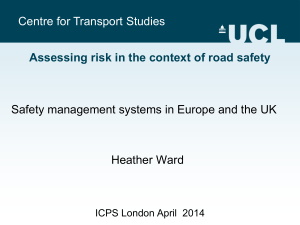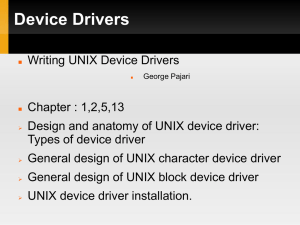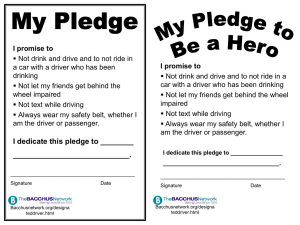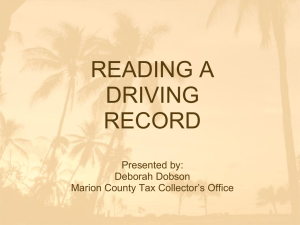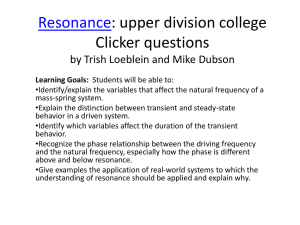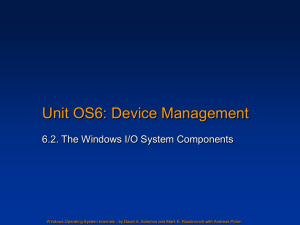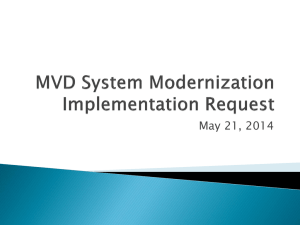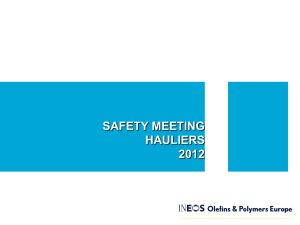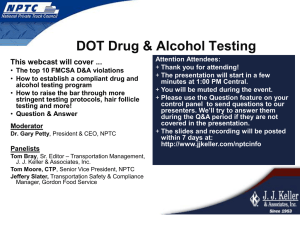presentation
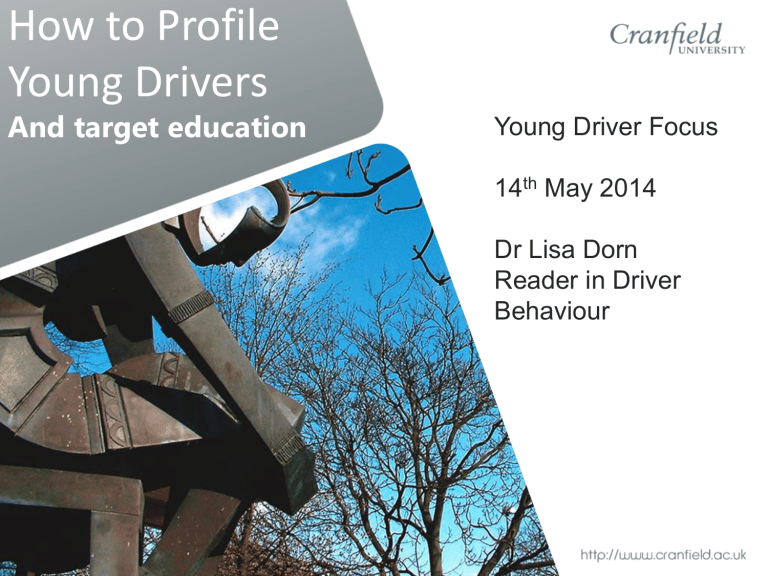
How to Profile
Young Drivers
And target education
Young Driver Focus
14 th May 2014
Dr Lisa Dorn
Reader in Driver
Behaviour
Introduction
• Driving test compulsory from 1935 – 80 years later?
• Research on the benefits of driver education
• Driver behaviour Vs driver skills
• Driver profiling
• Hazard perception training
Driver Education and
Road Safety
• Methodological
• No theory
• Lack of evaluation studies
• Small samples and no control groups
• Crashes are difficult criterion measures
• Unintended Consequences
• Earlier driver licensing increases crash risk
• Increased confidence and optimism bias
• Educational Content
• Short term in duration
• One-size-fits-all philosophy
• Focus on knowledge and skills
Driver Knowledge
• Driver knowledge although young drivers demonstrated a thorough awareness that speeding may lead to crashes, they did not regard speeding as risky for themselves
(Falk and Montgomery,
2007)
• Cranfield study of responses to Highway Code test and collisions and driving offences in the previous 6 months
• Increased knowledge of road rules shows little impact
(Wahlberg and Dorn, 2012)
Skill Vs
Behaviour
• In-vehicle driver training
Driver skill improves with practice - automation of information processing and psychomotor skill
• Behaviour-based approach to driver education
Driver behaviour motives, habits and driving style - may become less worried about safety over time
Young Driver
Behaviour
• Drivers engage in illegal or risky driving without being involved in crashes
• Young drivers characterized by thrill seeking, aggression, and over confidence which leads to risk-taking
• Inexperienced drivers may not fully acknowledge the danger of impulsive decisions (e.g. mobile phone use, alcohol etc.)
• Durable behavioural patterns get established
Driver Behaviour
Research
• Self evaluation and driver education (Hatakka et al., 2002)
• Angry drivers who acknowledge their anger need different interventions than those who are not aware of their problem
(Deffenbacher et al., 2003)
• Brief coaching intervention using personality profiles showed fewer speeding convictions compared with control group
(Paavar et al, 2013
• Resilience-focused education - significant reductions in crash involvement compared with driving-focused
(Senserrick et al, 2009)
Driver Risk Index
Situational Risk
Age, driving experience, mileage, licence, crash history etc
Behavioural Risk Factor
Hazard Monitoring
Thrill Seeking
Fatigue Proneness
Aggression
Dislike of Driving
Coping Risk Factor
Emotion Focus Coping
Avoidance Coping
Task Focus Coping
Confrontive Coping
Reappraisal
Correction Factors
Impression Management
Driver Confidence
DriverMetrics
Hazard Perception and
Crash Involvement
• Hazard perception - only driving-specific skill associated with crash risk
(Pelz and Krupat, 1974; TRRL, 1979; Quimby et al., 1986;
Congdon,1999; McKenna and Horswill, 1999; Wells et al., 2008; Darby et al.,
2009; Horswill et al., 2010a; Boufous et al., 2011; Cheng et al., 2011).
• 0.5 seconds visual search at junctions
(Labbett and Langham.,
2006)
• Virtually no insight into hazard perception skill - no relationship between self-assessments and objective measures (Horswill et al., 2011, 2012)
Hazard Perception
Training
• Effects transferred to on-road driving (Chapman et al., 2002)
• Increased novice driver skills to the level of experienced drivers
(Isler et al., 2009)
• Improved hazard perception performance and eye-scanning patterns (Pradhan et al., 2009)
• Improved visual search in a driving simulator (Petzoldt et al., 2013) and in real driving
(Isler et al., 2011)
• Reduced recidivism amongst offenders
(Wahlberg, 2011)
• Even experienced drivers benefit
(Horswill et al., 2013)
Free schools programme
Where are we heading?
• To improve driving standards we need to move away from purely skills-based driver training
• Focused education based on driver behaviour profiles
• Courses on interpreting profiles and driver coaching
• Hazard perception training – not just testing!

